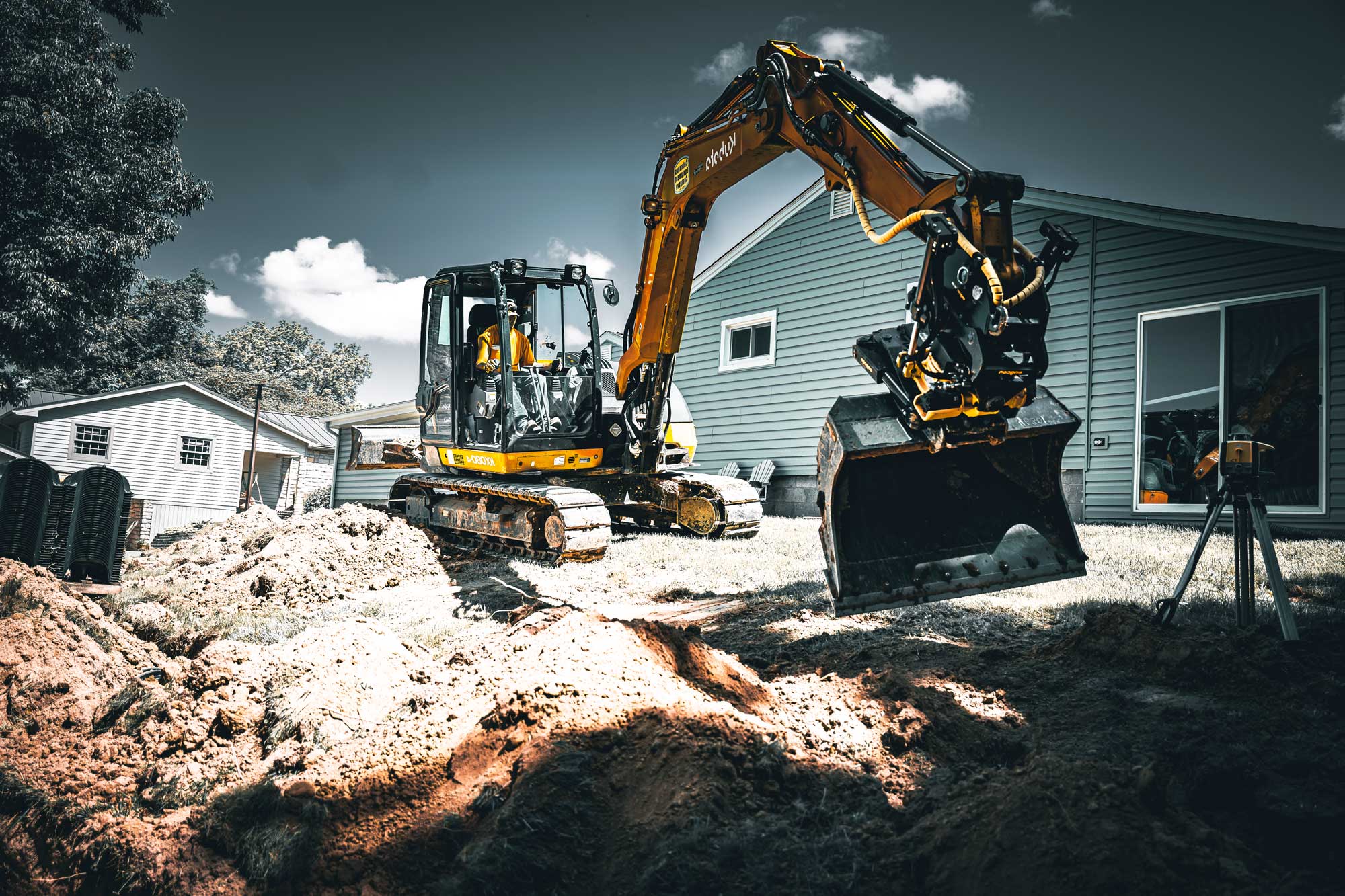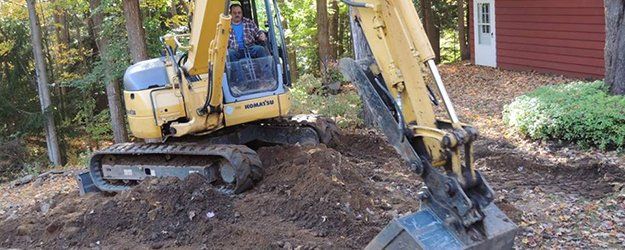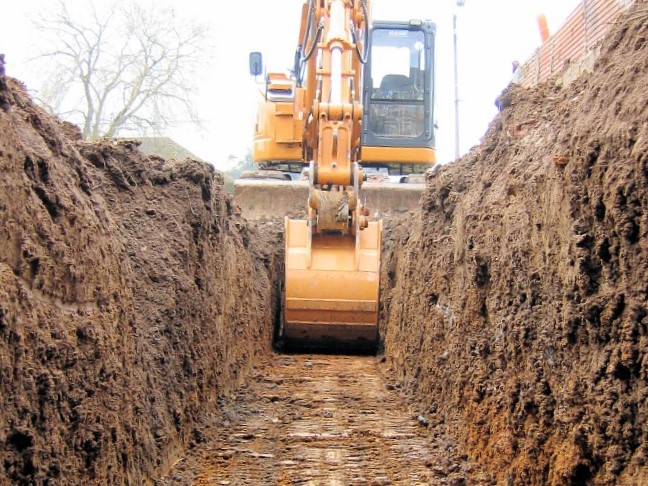Dump Truck Companies in Ohio - Trusted Dump Truck Solutions Across Ohio
Dump Truck Companies in Ohio - Trusted Dump Truck Solutions Across Ohio
Blog Article
Thorough Expedition: The Scientific Research Behind Superior Excavation Practices
The realm of excavation practices is a domain where science intertwines with workmanship to uncover the mysteries concealed below the planet's surface. From old hand tools to contemporary hydraulic excavators, the evolution of excavation techniques has actually been a testament to human resourcefulness and technical advancements. What really sets remarkable excavation methods apart is a deep understanding of geological principles, paired with the application of cutting-edge tools and techniques. By exploring the scientific research behind these methods, we can discover the secrets that lie underneath our feet and appreciate the accuracy and expertise that go into every dig.
Evolution of Excavation Strategies
Throughout history, the development of excavation techniques has played an essential duty in progressing building practices and historical explorations. From the fundamental tools utilized by our ancestors to the sophisticated machinery used in contemporary times, the progression of excavation methods has actually substantially transformed just how we approach various tasks.
In old times, manual work with standard devices such as pickaxes, shovels, and wheelbarrows was the key technique of excavation. This labor-intensive process restricted the deepness and extent of excavations, often causing slow-moving development and restricted access to specific websites. As human beings advanced, so did the methods and devices used for excavation.
The Industrial Transformation noted a turning factor in excavation techniques with the intro of steam-powered equipment. In modern times, innovation plays a crucial role in excavation, with advancements like General practitioner systems, drones, and 3D scanning boosting accuracy and efficiency in the field.
Function of Technology in Excavation

The assimilation of advanced innovation has actually fundamentally reinvented the area of excavation, enhancing precision and performance to extraordinary levels. Among the key technological improvements that has actually dramatically impacted excavation techniques is the application of GPS systems. These systems enable accurate mapping of excavation sites, making it possible for drivers to properly situate below ground utilities and frameworks. Furthermore, making use of telematics in excavation devices has enabled real-time tracking of machine efficiency, resulting in aggressive upkeep and increased functional efficiency.
Additionally, the introduction of 3D modeling and simulation software has streamlined the planning procedure for excavation tasks. Engineers and operators can now picture the whole excavation process before damaging ground, optimizing and recognizing prospective obstacles process. Along with this, the execution of drones in excavation activities has actually promoted aerial studies, volumetric measurements, and website assessments with unparalleled rate and accuracy.
Geological Concepts in Excavation
An understanding of geological concepts is necessary for making certain the structural stability and security of excavation sites. Geological elements play an essential function in establishing the expediency and security of excavation projects (lancaster excavation). One key geological concept to take into consideration is the kind of soil or rock present at the website. Various soil kinds, such as clay, sand, or gravel, have varying levels of security and need various excavation techniques. For example, natural dirts like clay might require extra support to protect against collapses, while sandy dirts may be susceptible to erosion during excavation.
Additionally, the geological structure of the location, consisting of mistakes, fractures, and rock developments, need to be very carefully analyzed to determine prospective dangers and challenges. Digging deep into near mistake lines or unsteady rock formations can bring about instability and possible dangers. By carrying out detailed geological surveys and analysis, excavators and designers can develop strategies to minimize risks and make certain the successful conclusion of excavation projects. Inevitably, incorporating geological concepts into excavation techniques is important for achieving secure, effective, and sustainable outcomes.

Latest Devices for Excavation
In the realm of excavation methods, modern developments in tools have actually reinvented the efficiency and precision of excavation processes. Among the current tools making waves look at these guys in the industry is the use of drones geared up with sophisticated imaging modern technology. These drones can give thorough aerial studies of excavation sites, using real-time data on topography and potential dangers. This details aids in better preparation and decision-making during the excavation process.
One more cutting-edge device gaining popularity is the execution of 3D printing technology for producing custom-made excavation tools. This allows for the manufacturing of specialized tools that are customized to the particular demands of a task, raising efficiency and decreasing downtime.
Furthermore, advancements in products scientific research have actually brought about the advancement of stronger and extra sturdy excavation devices. lancaster trenching. Tungsten carbide-tipped excavator attachments, as an example, deal premium efficiency in difficult ground conditions, improving productivity on-site
Science's Impact on Excavation Practices

Furthermore, clinical study on dirt auto mechanics next and geotechnical design has given important understandings into dirt habits, permitting excavation professionals to make educated choices relating to excavation approaches and soil stablizing techniques. On the whole, science proceeds to drive technology and improvement in excavation practices, making excavation projects a lot more efficient, cost-effective, and sustainable.

Final Thought
To conclude, the evolution of excavation techniques has actually been substantially affected by improvements in innovation and a deeper understanding of geological concepts. The most current tools and equipment made use of in excavation have improved performance and accuracy in the field. The application of clinical expertise has actually substantially enhanced excavation techniques, bring about extra efficient and sustainable techniques for digging deep into different types of products.
In the realm of excavation methods, contemporary advancements in devices have actually changed the performance and accuracy of excavation procedures. By leveraging clinical concepts, the excavation industry has been able to substantially boost performance, accuracy, and safety in excavation processes. GPR enables excavation groups to non-invasively check and map subsurface frameworks, utilities, and prospective threats, enabling them to intend excavation projects with greater precision and decreased danger of mishaps.
Furthermore, clinical study on dirt mechanics and geotechnical engineering has actually given beneficial understandings right into soil actions, permitting excavation specialists to make enlightened choices relating to excavation techniques and soil stablizing methods. In general, science continues to drive development and renovation in excavation methods, making excavation projects extra reliable, economical, and visit here lasting.
Report this page